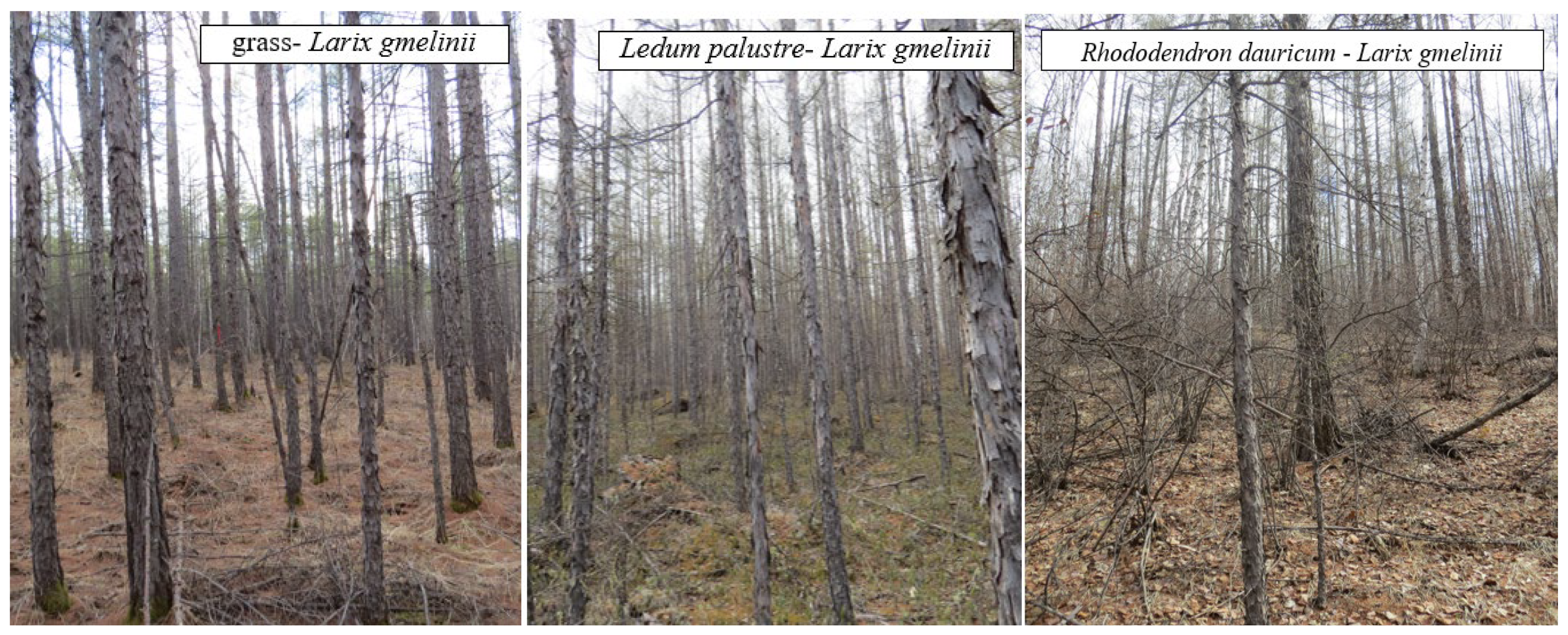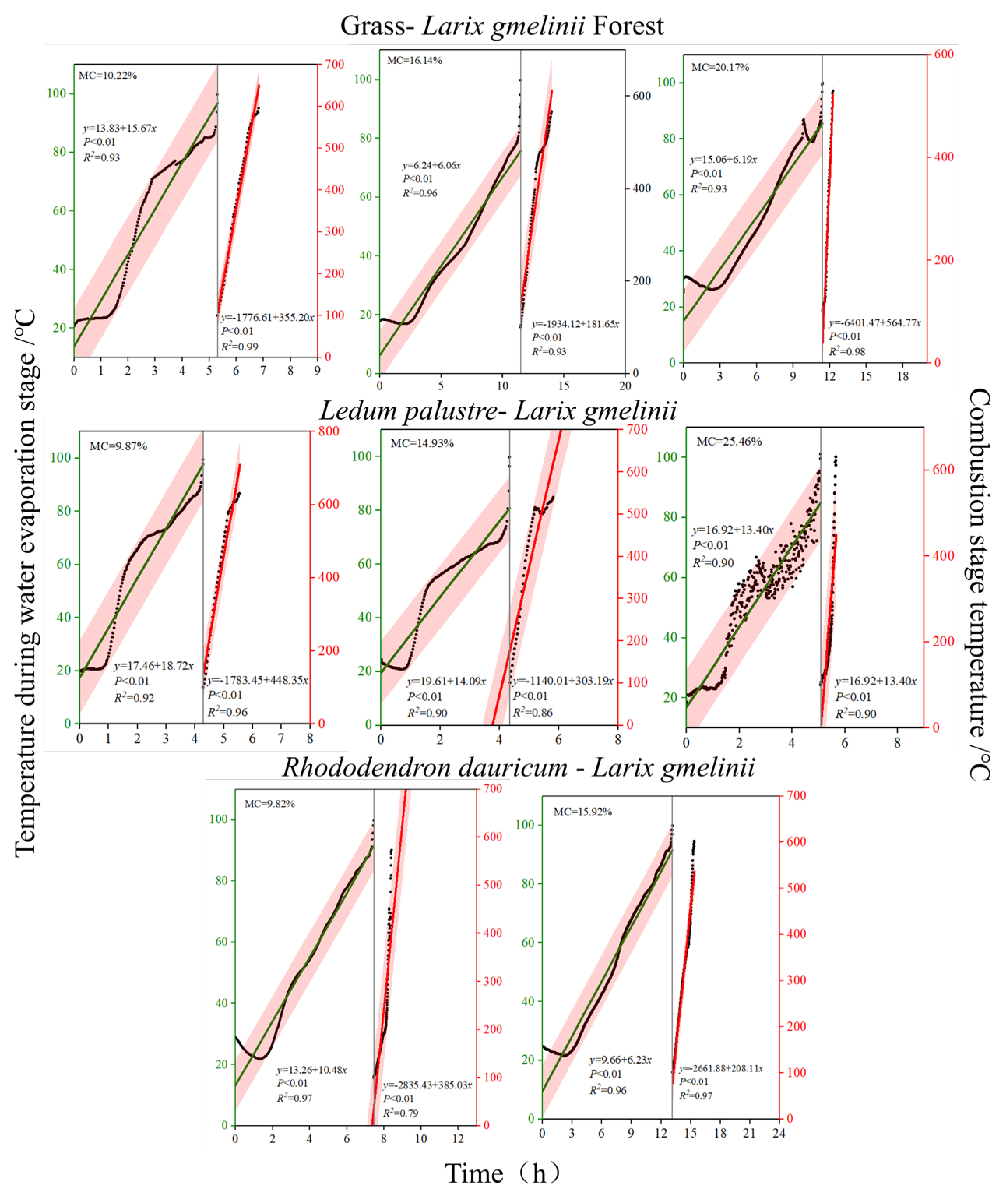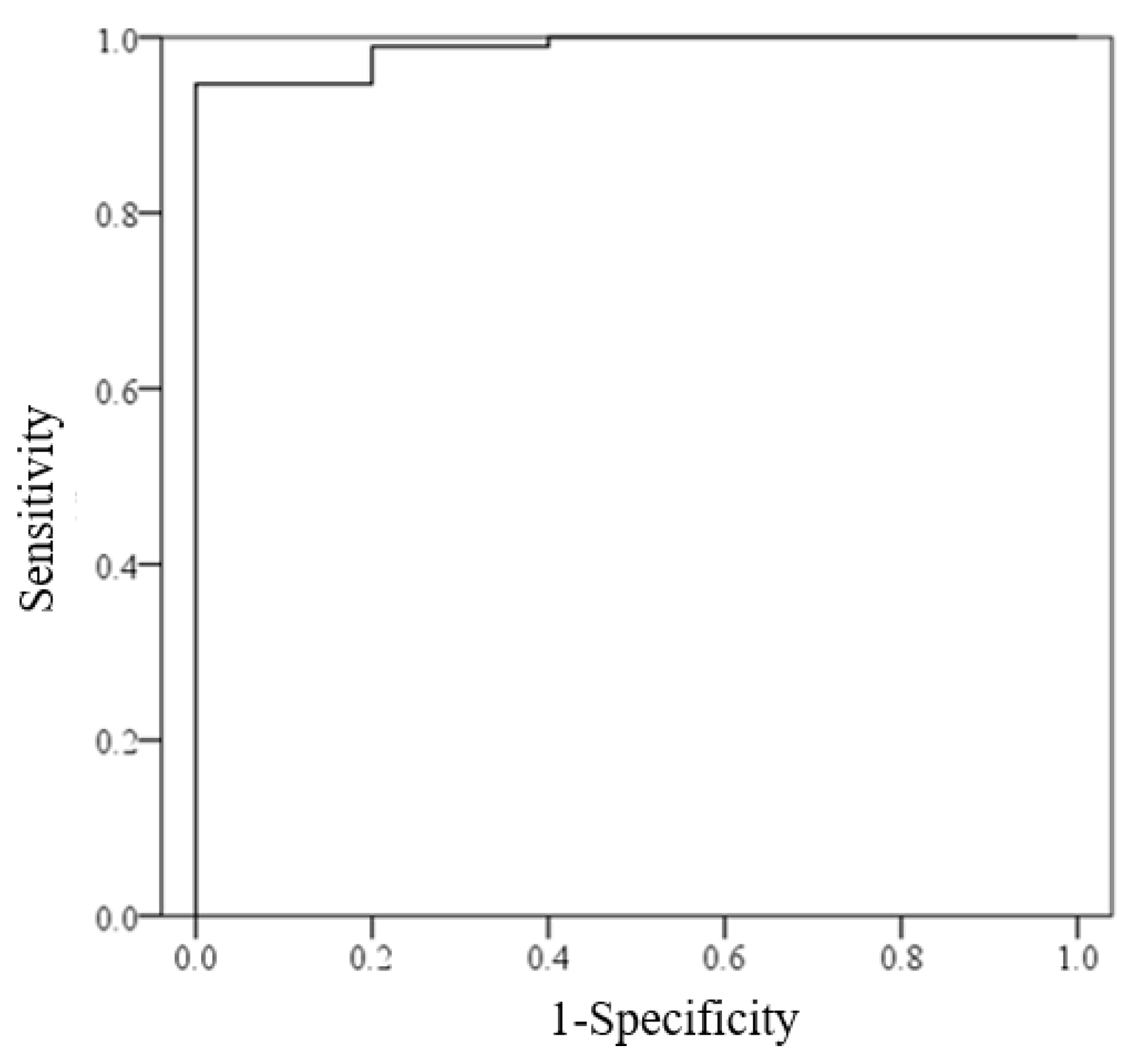Study on the Limit of Moisture Content of the Sub-Surface Fires Converted to the Surface Fires in the Boreal Forests of China
Abstract
:1. Introduction
2. Methods
2.1. Study Area
2.2. Sampling and Processing
2.3. Simulating Smoldering Experiment
2.4. Data Processing and Analysis
3. Results
3.1. Limit Moisture Content of Sub-Surface Fires Converted into Surface Fires
3.2. The Monitoring of the Sub-Surface Fires
3.3. Occurrence Probability Prediction Model of the Sub-Surface Fires Converted to the Surface Fires
4. Discussion
4.1. Smoldering Sub-Surface Fires Converted to Surface Fires
4.2. Sub-Surface Fires Monitoring Based on the Variation of Surface Temperature
4.3. Occurrence Probability Prediction Model of the Sub-Surface Fires
5. Conclusions
Author Contributions
Funding
Institutional Review Board Statement
Informed Consent Statement
Data Availability Statement
Acknowledgments
Conflicts of Interest
References
- Lin, S.; Huang, X.; Urban, J.; Mcallister, S.; Fernandez-Pello, C. Piloted ignition of cylindrical wildland fuels under irradiation. Front. Mech. Eng. 2019, 5, 54. [Google Scholar] [CrossRef]
- Purnomo, D.M.J.; Apers, S.; Bechtold, M.; Sofan, P.; Rein, G. KAPAS II: Simulation of peatland wildfires with daily variations of peat moisture content. Int. J. Wildland Fire 2023, 32, 823–835. [Google Scholar] [CrossRef]
- Rein, G.; Huang, X. Smouldering wildfires in peatlands, forests and the arctic: Challenges and perspectives. Curr. Opin. Environ. Sci. Health 2021, 24, 100296. [Google Scholar] [CrossRef]
- Hu, Y.; Fernandez-Anez, N.; Smith, T.E.L.; Rein, G. Review of emissions from smouldering peat fires and their contribution to regional haze episodes. Int. J. Wildland Fire 2018, 27, 293–312. [Google Scholar] [CrossRef]
- Rein, G.; Cleaver, N.; Ashton, C.; Pironi, P.; Torero, J.L. The severity of smouldering peat fires and damage to the forest soil. Catena 2008, 74, 304–309. [Google Scholar] [CrossRef]
- Cancellieri, D.; Leroy-Cancellieri, V.; Leoni, E.; Simeoni, A.; Kuzin, A.Y.; Filkov, A.I.; Rein, G. Kinetic investigation on the smouldering combustion of boreal peat. FUEL 2012, 93, 479–485. [Google Scholar] [CrossRef]
- Page, S.E.; Siegert, F.; Rieley, J.O.; Boehm, H.D.V.; Jaya, A.; Limin, S. The amount of carbon released from peat and forest fires in Indonesia during 1997. Nature 2002, 420, 61–65. [Google Scholar] [CrossRef] [PubMed]
- Black, R.R.; Aurell, J.; Holder, A.; George, I.J.; Gullett, B.K.; Hays, M.D.; Chris, D.G.; Dennis, T. Characterization of gas and particle emissions from laboratory burns of peat. Atmos. Environ. 2016, 132, 49–57. [Google Scholar] [CrossRef]
- Konovalov, I.B.; Beekmann, M.; Kuznetsova, I.N.; Yurova, A.; Zvyagintsev, A.M. Atmospheric impacts of the 2010 Russian wildfires: Integrating modelling and measurements of an extreme air pollution episode in the Moscow region. Atmos. Chem. Phys. 2011, 11, 10031–10056. [Google Scholar] [CrossRef]
- Huijnen, V.; Wooster, M.J.; Kaiser, J.W.; Gaveau, D.L.; Flemming, J.; Parrington, M.; Inness, A.; Murdiyarso, D.; Main, B.; Weele, M. Fire carbon emissions over maritime southeast asia in 2015 largest since 1997. Sci. Rep. 2016, 6, 26886. [Google Scholar] [CrossRef]
- Rein, G. Fire Phenomena in the Earth System: An Interdisciplinary Approach to Fire Science; John Wiley & Sons, Ltd.: Hoboken, NJ, USA, 2013; pp. 15–34. [Google Scholar]
- Turetsky, M.R.; Benscoter, B.; Page, S.; Rein, G.; Vanderwerf, G.R.; Watts, A. Global vulnerability of peatlands to fire and carbon loss. Nat. Geosci. 2015, 8, 11–14. [Google Scholar] [CrossRef]
- Johnston, J.; Johnston, L.; Wooster, M.; Brookes, A.; Cantin, A. Satellite detection limitations of sub-canopy smouldering wildfires in the north American boreal forest. Fire 2018, 1, 28. [Google Scholar] [CrossRef]
- Scholten, R.C.; Jandt, R.; Miller, E.A.; Rogers, B.M.; Veraverbeke, S. Overwintering fires in boreal forests. Nature 2021, 593, 399–404. [Google Scholar] [CrossRef] [PubMed]
- Marcotte, A.L.; Limpens, J.; Stoof, C.R.; Stoorvogel, J.J. Can ash from smoldering fires increase peatland soil pH? Int. J. Wildland Fire 2022, 31, 607–620. [Google Scholar] [CrossRef]
- Morgan, A.B.; Knapp, G.; Stoliarov, S.I.; Levchik, S.V. Studying smoldering to flaming transition in polyurethane furniture subassemblies: Effects of fabrics, flame retardants, and material type. Fire Mater. 2020, 45, 56–67. [Google Scholar] [CrossRef]
- Chao, C.Y.; Wang, J.H. Transition from smoldering to flaming combustion of horizontally oriented flexible polyurethane foam with natural convection. Combust. Flame 2001, 127, 2252–2264. [Google Scholar] [CrossRef]
- Stoliarov, S.I.; Zeller, O.; Morgan, A.B.; Levchik, S. An experimental setup for observation of smoldering-to-flaming transition on flexible foam/fabric assemblies. Fire Mater. 2017, 42, 128–133. [Google Scholar] [CrossRef]
- Christensen, E.G.; Fernandez-Anez, N.; Rein, G. Influence of soil conditions on the multidimensional spread of smouldering combustion in shallow layers. Combust. Flame 2020, 214, 361–370. [Google Scholar] [CrossRef]
- Lin, S.; Liu, Y.; Huang, X. How to build a firebreak to stop smouldering peat fire: Insights from a laboratory-scale study. Int. J. Wildland Fire 2021, 30, 454–461. [Google Scholar] [CrossRef]
- Salimi, S.; Berggren, M.; Scholz, M. Response of the peatland carbon dioxide sink function to future climate change scenarios and water level management. Glob. Change Biol. 2021, 27, 5154–5168. [Google Scholar] [CrossRef]
- Restuccia, F.; Huang, X.; Rein, G. Self-ignition of natural fuels: Can wildfires of carbon-rich soil start by self-heating? Fire Saf. J. 2017, 91, 828–834. [Google Scholar] [CrossRef]
- Huang, X.; Rein, G. Downward spread of smouldering peat fire: The role of moisture, density and oxygen supply. Int. J. Wildland Fire 2017, 26, 907–918. [Google Scholar] [CrossRef]
- Yin, S.; Shan, Y.; Tang, S.; Douglas, G.; Yu, B.; Cui, C.; Cao, L. Study on the Limit of Moisture Content of Smoldering Humus during Sub-Surface Fires in the Boreal Forests of China. Forests 2023, 14, 252. [Google Scholar] [CrossRef]
- Huang, X.; Rein, G. Smouldering combustion of peat in wildfires: Inverse modelling of the drying and the thermal and oxidative decomposition kinetics. Combust. Flame 2014, 161, 1633–1644. [Google Scholar] [CrossRef]
- Santoso, M.A.; Christensen, E.G.; Yang, J.; Rein, G. Review of the transition from smouldering to flaming combustion in wildfires. Front. Mech. Eng. 2019, 5, 49. [Google Scholar] [CrossRef]
- Lin, S.R.; Liu, Y.H.; Huang, X.Y. Climate-induced arctic-boreal peatland fire and carbon loss in the 21st century. Sci. Total Environ. 2021, 796, 148924. [Google Scholar] [CrossRef] [PubMed]
- Yu, Z. Northern peatland carbon stocks and dynamics: A review. Biogeosciences 2012, 9, 4071–4085. [Google Scholar] [CrossRef]
- Harden, J.W. The role of fire in the boreal carbon budget. Glob. Change Biol. 2000, 6, 174–184. [Google Scholar] [CrossRef]
- Page, S.E.; Weiss, D.; Rieley, J.O.; Shotyk, W.; Limin, S.H. A record of Late Pleistocene and Holocene carbon accumulation and climate change from an equatorial peat bog (Kalimantan, Indonesia): Implications for past, present and future carbon dynamics. J. Quat. Sci. 2004, 19, 625–635. [Google Scholar] [CrossRef]
- Johnston, J.F.; Hollingsworth, T.N.; Chapin, F.S.; Mack, M.C. Changes in fire regime break the legacy lock on successional trajectories in Alaskan boreal forest. Glob. Change Biol. 2010, 16, 1281–1295. [Google Scholar] [CrossRef]
- Blauw, L.G.; Logtestijn, R.S.P.; Broekman, R.; Aerts, R.; Cornelissen, H.C. Tree species identity in high-latitude forests determines fire spread through fuel ladders from branches to soil and vice versa. For. Ecol. Manag. 2017, 400, 475–484. [Google Scholar] [CrossRef]
- Cao, B.; Qi, J.; Chen, E.; Xiao, Q.; Liu, Q.; Li, Z. Fine scale optical remote sensing experiment of mixed stand over complex terrain (FOREST) in the Genhe Reserve Area: Objective, observation and a case study. Int. J. Digit. Earth 2021, 14, 1411–1432. [Google Scholar] [CrossRef]
- Shi, J.; Zhang, W.; Marino, A.; Zeng, P.; Ji, Y.; Zhao, H.; Huang, G.; Wang, M. Forest total and component biomass retrieval via GA-SVR algorithm and quad-polarimetric SAR data. Int. J. Appl. Earth Obs. Geoinf. 2023, 118, 103275. [Google Scholar] [CrossRef]
- Guo, F.; Wang, G.; Su, Z.; Liang, H.; Wenhui, W.; Lin, F.; Liu, A. What drives forest fire in Fujian, China? Evidence from logistic regression and Random Forests. Int. J. Wildland Fire 2016, 25, 505–519. [Google Scholar] [CrossRef]
- Milanovic, S.D.; Marković, N.; Pamučar, D.; Gigovic, L.; Kostic, P.; Milanović, S.D. Forest Fire Probability Mapping in Eastern Serbia: Logistic Regression versus Random Forest Method. Forests 2020, 12, 5. [Google Scholar] [CrossRef]
- Mack, M.; Bret-Harte, M.; Hollingsworth, T. Carbon loss from an unprecedented Arctic tundra wildfire. Nature 2011, 475, 489–492. [Google Scholar] [CrossRef] [PubMed]
- Kuklina, V.; Sizov, O.; Rasputina, E.; Bilichenko, I.; Krasnoshtanova, N.; Bogdanov, V.; Petrov, A.N. Fires on Ice: Emerging Permafrost Peatlands Fire Regimes in Russia’s Subarctic Taiga. Land 2022, 11, 322. [Google Scholar] [CrossRef]
- Nelson, K.; Thompson, D.; Hopkinson, C.; Petrone, R.M.; Chasmer, L. Peatland-fire interactions: A review of wildland fire feedbacks and interactions in Canadian boreal peatlands. Sci. Total Environ. 2021, 769, 145212. [Google Scholar] [CrossRef] [PubMed]
- Watts, A.C.; Kobziar, L.N. Smoldering Combustion and Ground Fires: Ecological Effects and Multi-Scale Significance. Fire Ecol. 2013, 9, 124–132. [Google Scholar] [CrossRef]
- Ohlemiller, T.J. Modeling of smoldering combustion propagation. Prog. Energy Combust. Sci. 1985, 11, 277–310. [Google Scholar] [CrossRef]
- Possell, M.; Bell, T.L. The influence of fuel moisture content on the combustion of Eucalyptus foliage. Int. J. Wildland Fire 2013, 22, 343–352. [Google Scholar] [CrossRef]
- Ramadhan, M.L.; Palamba, P.; Imran, F.A.; Kosasih, E.A.; Nugroho, Y.S. Experimental study of the effect of water spray on the spread of smoldering in Indonesian peat fires. Fire Saf. J. 2017, 91, 671–679. [Google Scholar] [CrossRef]
- Huang, X.; Rein, G.; Chen, H. Computational smoldering combustion: Predicting the roles of moisture and inert contents in peat wildfires. Proc. Combust. Inst. 2015, 35, 2673–2681. [Google Scholar] [CrossRef]
- Hurley, J. SFPE Handbook of Fire Protection Engineering; Springer: New York, NY, USA, 2016; pp. 104–112. [Google Scholar]
- Xifré-Salvadó, M.À.; Prat-Guitart, N.; Francos, M.; Úbeda, X.; Castellnou, M. Smouldering Combustion Dynamics of a Soil from a Pinus halepensis Mill. Forest. A Case Study of the Rocallaura Fires in Northeastern Spain. Appl. Sci. 2020, 10, 3449. [Google Scholar] [CrossRef]
- Hunter, M.E.; Taylor, M.H. The economic value of fuel treatments: A review of the recent literature for fuel treatment planning. Forests 2022, 13, 2042. [Google Scholar] [CrossRef]
- Hu, Y.Q.; Eirik, C.; Francesco, R.; Rein, G. Transient gas and particle emissions from smouldering combustion of peat. Proc. Combust. Inst. 2019, 37, 4035–4042. [Google Scholar] [CrossRef]
- Grishin, A.M.; Yakimov, A.S. Mathematical modelling of thermophysical processes at peat firing and smoldering. Thermophys. Aeromech. 2010, 17, 137–153. [Google Scholar] [CrossRef]
- Hadden, R.M.; Rein, G.; Belcher, C.M. Study of the competing chemical reactions in the initiation and spread of smouldering combustion in peat. Proc. Combust. Inst. 2013, 34, 2547–2553. [Google Scholar] [CrossRef]
- Reardon, J.; Curcio, G. Estimated smoldering probability: A new tool for predicting ground fire in the organic soils on the north carolina coastal plain. Fire Manag. Today 2011, 4, 95–104. [Google Scholar]
- Otway, S.G.; Bork, E.W.; Anderson, K.R.; Alexander, M.E. Predicting sustained smouldering combustion in trembling aspen duff in elk island national park, Canada. Int. J. Wildland Fire 2007, 16, 690–701. [Google Scholar] [CrossRef]
- Otway, S.G.; Bork, E.W.; Anderson, K.R.; Alexander, M.E. Relating changes in duff moisture to the Canadian forest fire weather index system in populous tremuloides stands in elk island national park. Can. J. For. Res. 2007, 37, 1987–1998. [Google Scholar] [CrossRef]
- De Groot, W.J. Peatland fires and carbon emissions Frontline Express 50. Rev. Bras. Ciências Sociais 2012, 23, 11–43. [Google Scholar]
- Andrews, P.L.; Loftsgaarden, D.O.; Bradshaw, L.S. Evaluation of fire danger rating indexes using logistic regression and percentile analysis. Int. J. Wildland Fire 2003, 12, 213–226. [Google Scholar] [CrossRef]
- Ordóñez, C.; Saavedra, A.; Rodríguez-Pérez, J.R.; Castedo-Dorado, F.; Covian, E. Using model-based geostatistics to predict lightning-caused wildfires. Environ. Model. Softw. 2012, 29, 44–50. [Google Scholar] [CrossRef]
- Stoyanova, J.S.; Georgiev, C.G.; Neytchev, P.N. Satellite Observations of Fire Activity in Relation to Biophysical Forcing Effect of Land Surface Temperature in Mediterranean Climate. Remote Sens. 2022, 14, 747. [Google Scholar] [CrossRef]
- Song, W. Relating Forest Fire Occurrences to Diurnal Land Surface Temperature Anomalies in Victoria, Australia from 2001 to 2019; University of British Columbia Library: Vancouver, BC, Canada, 2021. [Google Scholar]
- Stoyanova, J.; Georgiev, C.; Neytchev, P.; Kulishev, A. Spatial-Temporal Variability of Land Surface Dry Anomalies in Climatic Aspect: Biogeophysical Insight by Meteosat Observations and SVAT Modeling. Atmosphere 2019, 10, 636. [Google Scholar] [CrossRef]
- Maffei, C.; Alfieri, S.M.; Menenti, M. Relating Spatiotemporal Patterns of Forest Fires Burned Area and Duration to Diurnal Land Surface Temperature Anomalies. Remote Sens. 2018, 10, 1777. [Google Scholar] [CrossRef]






| Fuel Type | Parameter | Independent Variable | Standard Error | Significance | p-Value | Equation |
|---|---|---|---|---|---|---|
| Grass-Larix gmelinii forest | Peak temperature/°C | Constant | 3.58 | <0.01 | <0.01 | y = 519.19 + 0.46x1 − 4.52x2 |
| Surface temperature | 0.008 | <0.01 | ||||
| Moisture content | 0.18 | <0.01 | ||||
| Depth/cm | Constant | 0.189 | <0.01 | <0.01 | y = 28.04 − 0.008x1 − 1.18x2 | |
| Surface temperature | 0.0001 | <0.01 | ||||
| Moisture content | 0.009 | <0.01 | ||||
| Time/h | Constant | 0.1 | 0.044 | <0.01 | y = 0.2 + 0.02x1 + 0.22x2 | |
| Surface temperature | 0.0002 | <0.01 | ||||
| Moisture content | 0.005 | <0.01 | ||||
| Ledum palustre-Larix gmelinii forest | Peak temperature/°C | Constant | 5.83 | <0.01 | <0.01 | y = 515.34 + 0.51x1 − 4.57x2 |
| Surface temperature | 0.01 | <0.01 | ||||
| Moisture content | 0.28 | <0.01 | ||||
| Depth/cm | Constant | 0.09 | <0.01 | <0.01 | y = 27.66 − 0.02x1 − 0.06x2 | |
| Surface temperature | 0.0001 | <0.01 | ||||
| Moisture content | 0.004 | <0.01 | ||||
| Time/h | Constant | 0.07 | <0.01 | <0.01 | y = −0.53 + 0.008x1 + 0.17x2 | |
| Surface temperature | 0.0002 | <0.01 | ||||
| Moisture content | 0.003 | <0.01 | ||||
| Rhododendron dauricum-Larix gmelinii forest | Peak temperature/°C | Constant | 3.39 | <0.01 | <0.01 | y = 505.29 + 0.46x1 − 6.15x2 |
| Surface temperature | 0.01 | <0.01 | ||||
| Moisture content | 0.19 | <0.01 | ||||
| Depth/cm | Constant | 0.16 | <0.01 | <0.01 | y = 33.49 − 0.03x1 − 0.54x2 | |
| Surface temperature | 0.0001 | <0.01 | ||||
| Moisture content | 0.009 | <0.01 | ||||
| Time/h | Constant | 0.14 | <0.01 | <0.01 | y = −5.30 + 0.04x1 + 0.64x2 | |
| Surface temperature | 0.0001 | <0.01 | ||||
| Moisture content | 0.008 | <0.01 |
| Parameter | Standard Error | Significance | R2 |
|---|---|---|---|
| Constant | 6.131 | 0.040 | 0.73 |
| Moisture content | 0.324 | 0.045 | |
| Depth | 0.402 | 0.039 |
| Independent Variable | Coefficient | Lower Bound | Upper Bound |
|---|---|---|---|
| Moisture content | 1.944 | 1.029 | 3.670 |
| Depth | 0.448 | 0.204 | 0.984 |
Disclaimer/Publisher’s Note: The statements, opinions and data contained in all publications are solely those of the individual author(s) and contributor(s) and not of MDPI and/or the editor(s). MDPI and/or the editor(s) disclaim responsibility for any injury to people or property resulting from any ideas, methods, instructions or products referred to in the content. |
© 2023 by the authors. Licensee MDPI, Basel, Switzerland. This article is an open access article distributed under the terms and conditions of the Creative Commons Attribution (CC BY) license (https://creativecommons.org/licenses/by/4.0/).
Share and Cite
Shan, Y.; Chen, X.; Yin, S.; Cao, L.; Tang, S.; Yu, B.; Cui, C. Study on the Limit of Moisture Content of the Sub-Surface Fires Converted to the Surface Fires in the Boreal Forests of China. Fire 2023, 6, 364. https://doi.org/10.3390/fire6090364
Shan Y, Chen X, Yin S, Cao L, Tang S, Yu B, Cui C. Study on the Limit of Moisture Content of the Sub-Surface Fires Converted to the Surface Fires in the Boreal Forests of China. Fire. 2023; 6(9):364. https://doi.org/10.3390/fire6090364
Chicago/Turabian StyleShan, Yanlong, Xiang Chen, Sainan Yin, Lili Cao, Shuyuan Tang, Bo Yu, and Chenxi Cui. 2023. "Study on the Limit of Moisture Content of the Sub-Surface Fires Converted to the Surface Fires in the Boreal Forests of China" Fire 6, no. 9: 364. https://doi.org/10.3390/fire6090364
APA StyleShan, Y., Chen, X., Yin, S., Cao, L., Tang, S., Yu, B., & Cui, C. (2023). Study on the Limit of Moisture Content of the Sub-Surface Fires Converted to the Surface Fires in the Boreal Forests of China. Fire, 6(9), 364. https://doi.org/10.3390/fire6090364





